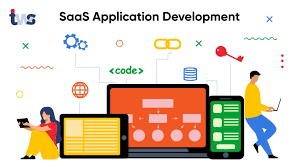Accelerate Your Projects with a Cutting-Edge Rapid Application Development Platform
The Power of Rapid Application Development Platforms
Rapid Application Development (RAD) platforms have revolutionized the way software applications are created and deployed. These platforms enable developers to build applications quickly and efficiently, reducing time-to-market and increasing productivity.
Benefits of RAD Platforms:
- Speed: RAD platforms provide tools and frameworks that streamline the development process, allowing developers to create applications in a fraction of the time it would take using traditional methods.
- Flexibility: RAD platforms offer flexibility in design and functionality, making it easy to adapt to changing requirements and user feedback.
- Cost-Effective: By accelerating the development process, RAD platforms help reduce costs associated with software development, maintenance, and updates.
- User-Friendly: RAD platforms often come with intuitive interfaces and drag-and-drop features that make it easy for developers of all skill levels to create sophisticated applications.
- Collaboration: RAD platforms promote collaboration among team members by providing tools for version control, code sharing, and real-time communication.
Key Features of RAD Platforms:
RAD platforms typically include the following key features:
- Rapid Prototyping: Allows developers to quickly create prototypes to gather feedback from stakeholders.
- Data Integration: Simplifies the process of integrating data from various sources into the application.
- Code Generation: Automatically generates code based on visual design elements, reducing manual coding effort.
- Reusable Components: Provides a library of pre-built components that can be easily integrated into applications.
- Cross-Platform Support: Enables developers to build applications that can run on multiple devices and operating systems.
Conclusion
Rapid Application Development platforms have become indispensable tools for modern software development. By empowering developers to create high-quality applications quickly and efficiently, RAD platforms drive innovation, improve time-to-market, and enhance overall business agility. Embracing RAD technology can give organizations a competitive edge in today’s fast-paced digital landscape.
Understanding Rapid Application Development Platforms: Key FAQs and Insights
- What is rapid application development platform?
- What is rapid application development?
- What is an example of RAD?
- What companies use RAD?
- What is the difference between RAD and agile?
- What is the difference between agile and rapid application development?
- What is a RAD platform?
- Does Microsoft use RAD?
What is rapid application development platform?
A rapid application development platform is a software tool or framework that enables developers to quickly create and deploy applications with minimal manual coding. It provides a set of tools, libraries, and pre-built components that streamline the development process, allowing for faster prototyping, integration of data sources, and code generation. Rapid application development platforms are designed to accelerate the software development lifecycle, reduce time-to-market, and enhance collaboration among team members. By simplifying the application development process and promoting flexibility in design and functionality, these platforms empower developers to build high-quality applications efficiently.
What is rapid application development?
Rapid Application Development (RAD) is a software development approach that emphasizes quick prototyping, iterative development, and user feedback to accelerate the creation of applications. Unlike traditional methods that follow a linear process, RAD focuses on delivering functional software in shorter timeframes by using tools and techniques that streamline the development cycle. By prioritizing speed and flexibility, RAD enables developers to respond swiftly to changing requirements and market demands, ultimately resulting in faster time-to-market and increased efficiency in application development.
What is an example of RAD?
An example of a Rapid Application Development (RAD) platform is OutSystems. OutSystems is a low-code development platform that enables users to quickly build and deploy enterprise-grade applications with minimal coding. With its visual development environment and pre-built templates, OutSystems allows developers to create custom applications in a fraction of the time it would take using traditional development methods. This platform’s RAD approach accelerates the software development process, making it an excellent choice for organizations looking to streamline their application development efforts and bring products to market faster.
What companies use RAD?
Many companies across various industries utilize Rapid Application Development (RAD) platforms to streamline their software development processes and accelerate time-to-market for their applications. Companies such as IBM, Microsoft, Oracle, and Salesforce are known to leverage RAD platforms to quickly create custom applications tailored to their specific business needs. Additionally, startups and smaller businesses often turn to RAD platforms like OutSystems, Mendix, and Appian to build agile and cost-effective solutions that help them stay competitive in the market. The versatility and efficiency of RAD platforms make them a popular choice for companies of all sizes looking to innovate and adapt swiftly in today’s dynamic business environment.
What is the difference between RAD and agile?
When comparing Rapid Application Development (RAD) with Agile methodologies, it’s important to note that while both approaches aim to accelerate the software development process, they have distinct differences in their implementation. RAD focuses on rapid prototyping and iterative development, emphasizing quick delivery of functional prototypes to gather feedback and make necessary adjustments. On the other hand, Agile is a broader methodology that emphasizes collaboration, adaptability, and continuous improvement through short development cycles known as sprints. While RAD is more focused on speed and efficiency in building applications, Agile places a greater emphasis on flexibility, customer collaboration, and responding to change. Both RAD and Agile have their strengths and are commonly used in software development based on the specific project requirements and goals.
What is the difference between agile and rapid application development?
When comparing agile and rapid application development (RAD), it’s important to note that both methodologies share common goals of accelerating the software development process and responding to changing requirements efficiently. However, the main difference lies in their approach: agile is a broader methodology that focuses on iterative development, collaboration, and adaptability throughout the entire project lifecycle, while RAD specifically emphasizes rapid prototyping and quick iterations to deliver functional software components in a shorter timeframe. Agile is more flexible and emphasizes customer collaboration, while RAD places a stronger emphasis on speed and quick delivery of working software. Ultimately, both methodologies aim to enhance productivity and customer satisfaction through streamlined development processes tailored to meet modern business needs.
What is a RAD platform?
A RAD platform, short for Rapid Application Development platform, is a software development tool that enables developers to quickly build and deploy applications with minimal coding. It provides a set of tools, frameworks, and pre-built components that streamline the development process, allowing for faster iteration and delivery of software solutions. RAD platforms are designed to accelerate the development cycle, reduce time-to-market, and increase productivity by simplifying tasks such as prototyping, data integration, and code generation. Overall, a RAD platform empowers developers to create high-quality applications efficiently and adapt to changing requirements with ease.
Does Microsoft use RAD?
Microsoft has a long history of utilizing Rapid Application Development (RAD) methodologies in its software development processes. While Microsoft does not exclusively rely on RAD for all its projects, the company has incorporated RAD principles and tools into various aspects of its development workflow. Microsoft often leverages RAD platforms and frameworks to accelerate the creation of applications, improve time-to-market, and enhance collaboration among development teams. By embracing RAD practices, Microsoft aims to deliver innovative solutions efficiently and effectively to meet the evolving needs of its users and customers.






